In pictures: 40 years of the Kessock Bridge
- Published
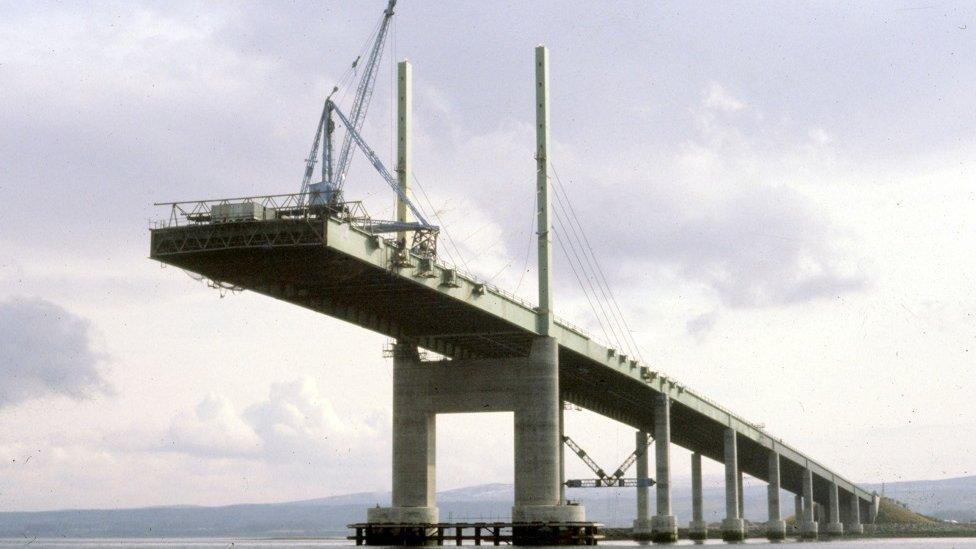
The Kessock Bridge took four years to build
The Kessock Bridge in the Highlands is 40 years old.
"One of the beauties of being a civil engineer is you are often building things which are of benefit to the area in which you are building them," says Ken Wilson, who helped to supervise the construction of the crossing.
"The Kessock Bridge was particularly in that category because it benefitted Inverness, the Black Isle and the Highlands beyond enormously by providing better transport links."
The 1,056m (3,465ft) crossing carries the A9 trunk road over a narrow sea channel between South Kessock in Inverness and North Kessock on the Black Isle.
It took four years to build and cost £25m - more than £100m in today's money.
Before the bridge, a ferry had operated across the Beauly Firth between Inverness and South Kessock from the 15th Century.
North Kessock could also be reached by road from Inverness, but it was a trip of more than 20 miles (32km) around the shores of the Beauly Firth.
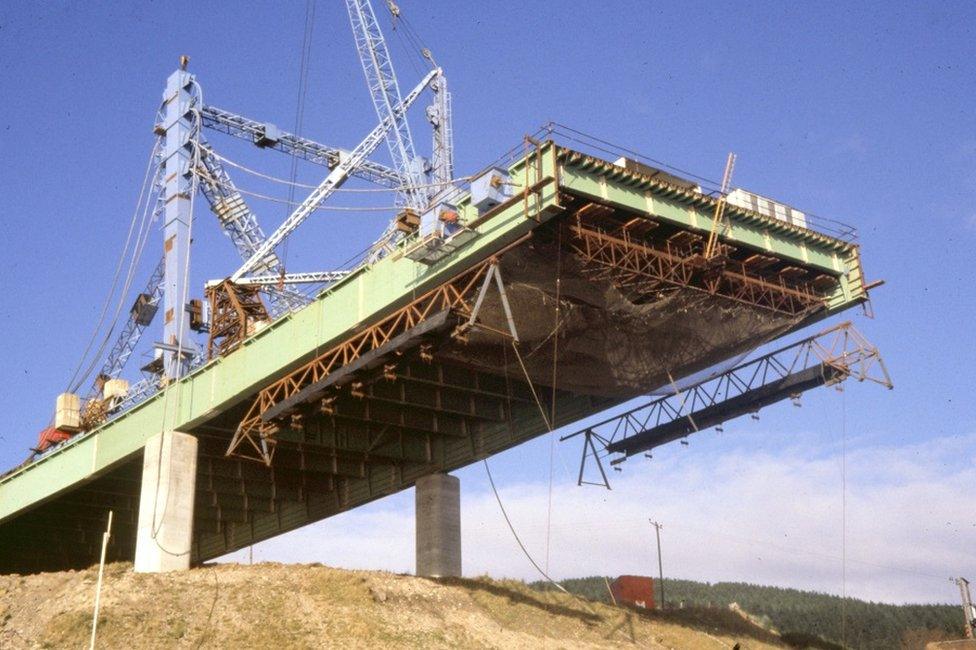
The bridge was constructed in two sections - one starting at North Kessock and the other from Inverness

The bridge was built across a narrow sea channel
The last Kessock ferry sailed in July 1982 when the bridge was opened to traffic, and just weeks before the Queen Mother officially opened the crossing on 6 August.
At the time of its completion, the Kessock Bridge was the largest of its kind in Europe.
It was designed by German bridge engineer Hellmut Homberg to withstand extreme weather and potential earthquakes caused by geological movement in the Great Glen geological fault.
Today, an estimated 30,000 vehicles use the bridge every day.

A view of the bridge during construction - with one aspiring engineer in the foreground - taken from North Kessock
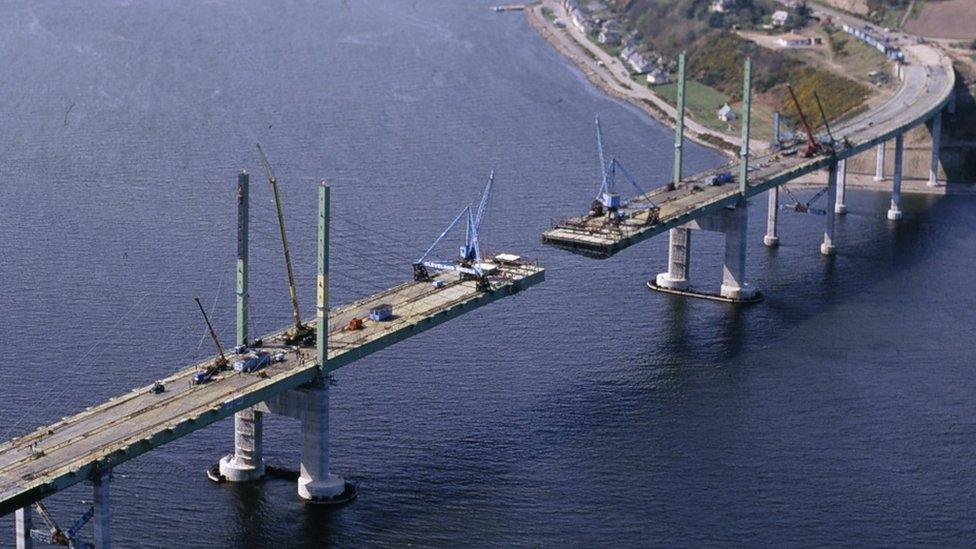
One of the bridge's construction crew won a bet by hitting a golf ball between the two spans
Engineer Mr Wilson was among the many involved in the bridge's construction.
He recalls how, during the building work, a steel erector made a bet with his foreman that he would be the first to drive across the bridge. Believing the chances of this ever happening to be highly unlikely, the foreman agreed to make the wager.
The workman turned up the next day with a golf ball and a golf driver and drove the ball across the nine metre (30ft) gap between the two spans of the incomplete bridge to win his bet.
Mr Wilson says other stories about the bridge include special permission being given to a cyclist to cross it before it was opened to traffic.
He hoped it would provide him with a shortcut on his way to setting a new Guinness World Record for cycling from Land's End to John O'Groats.
The cyclist successfully broke the record after shaving 15 miles (24km) off his journey thanks to the bridge.


Mother-of-nine Margaret Paterson, a Dingwall and Seaforth councillor on Highland Council, believes the bridge has helped to save lives by providing a quicker route from other parts of the Highlands to hospital services in Inverness.
Before the bridge was available, Mrs Paterson says she had to make a challenging journey from her home in Ross-shire to hospital in Inverness along the shores of the Beauly Firth after one of her children fell unwell with pneumonia.
"It was icy conditions being January. It was a worry," said Mrs Paterson.
She added: "When my last one was born we were grateful for the bridge, because we got to Raigmore Hospital in Inverness with five or 10 minutes to spare.
"If we had to go by the long road, she would have been born in the ambulance."
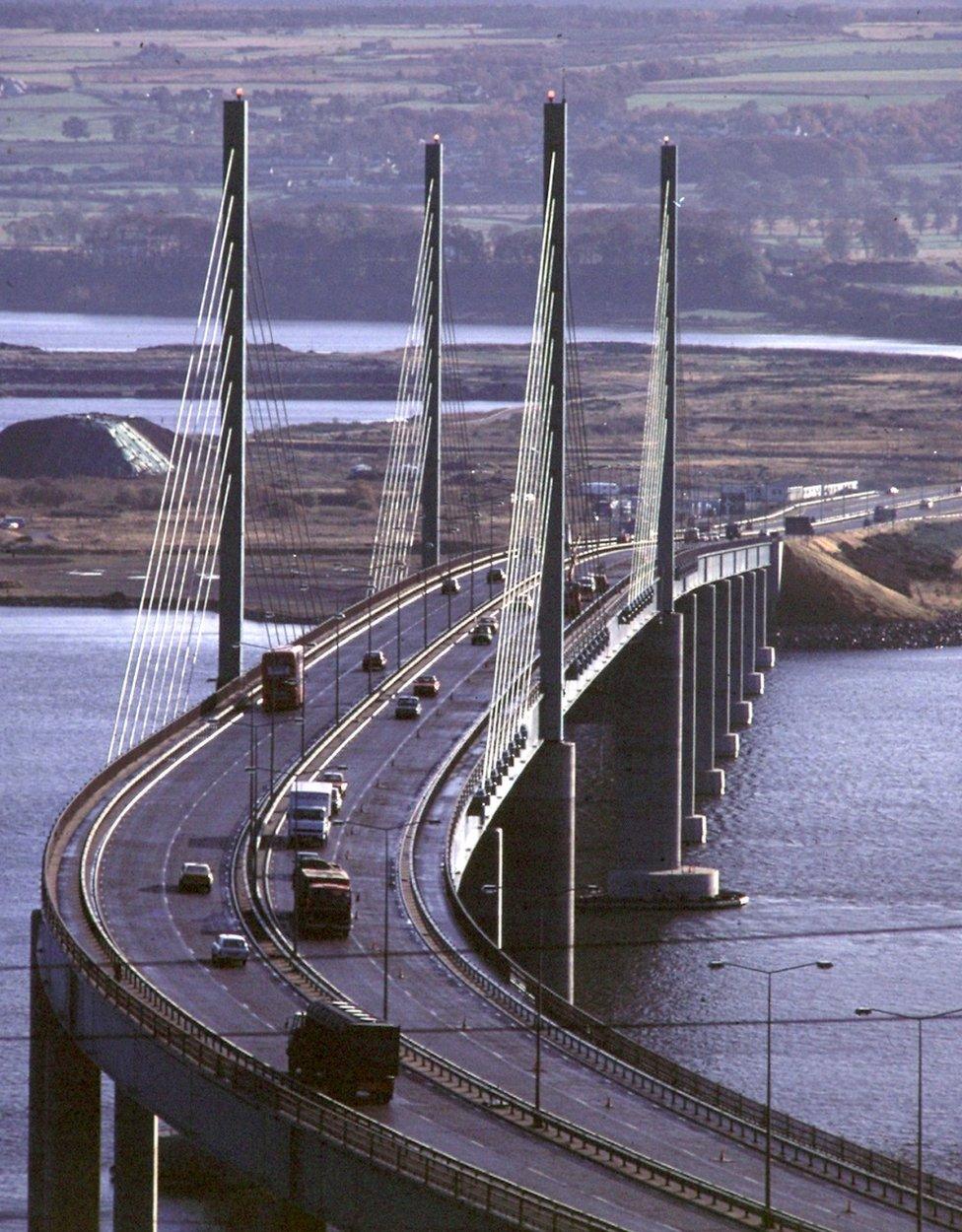
A picture of the bridge showing empty land in the background where Inverness Caledonian Thistle FC's stadium now stands


Today, an estimated 30,000 vehicles use the bridge every day
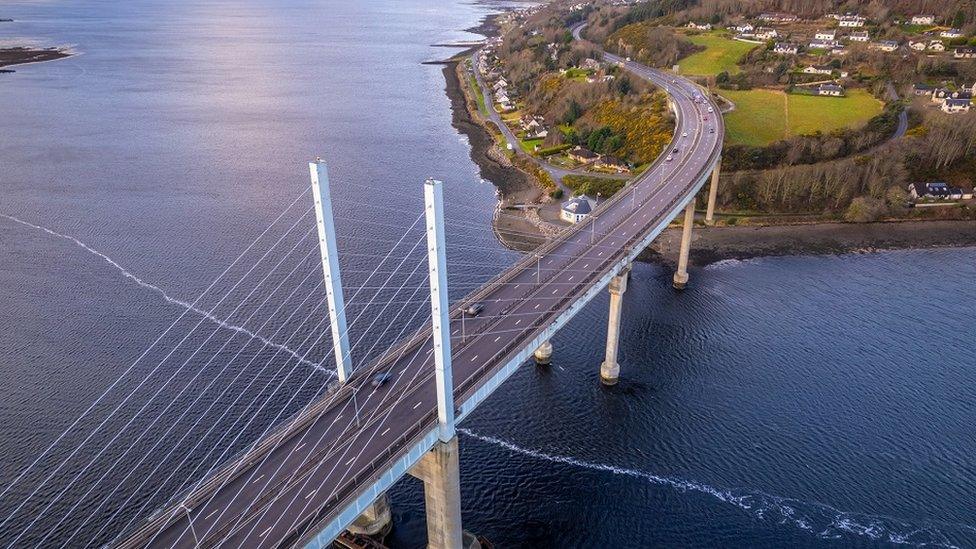
An aerial view of the bridge towards North Kessock
Transport Minister Jenny Gilruth says the Kessock Bridge has become an iconic part of Scotland's roads network.
Eddie Ross from trunk roads company Bear Scotland agrees. He says: "We're extremely proud to be the custodians of this iconic Scottish structure.
"We've been responsible for an extensive maintenance and refurbishment programme since 2013 and the continuation of this, with major investment from Transport Scotland, will ensure the bridge operates effectively for many years to come."
All images are copyrighted.